Treasury bond prices fell sharply on Monday and rallied back strongly on Tuesday as traders nervously await today’s Fed rate decision. It appears bond traders are struggling with the implications of higher interest rates and a rush of Treasury issuance coming once the debt cap is lifted. Stoking fears, Janet Yellen increased the second quarter Treasury borrowing estimate by $126 billion. It appears federal tax revenue was lighter than expected, while spending is higher than the Treasury forecast last January. Over the last 15 years, periods of excess Treasury supply were not problematic as the Fed helped the cause keeping interest rates low and buying bonds via QE on multiple occasions. This time is different!
The Fed is on the cusp of hiking rates too far. While the economy is fine, many banks are sitting on large losses due to higher rates. If the Fed raises today and promises to maintain its “higher for longer” stance, the odds of a recession and continued banking problems will rise. Unfortunately, despite warnings from the Treasury, the Fed does not see the cliff ahead as it singularly focused on reducing sticky inflation.
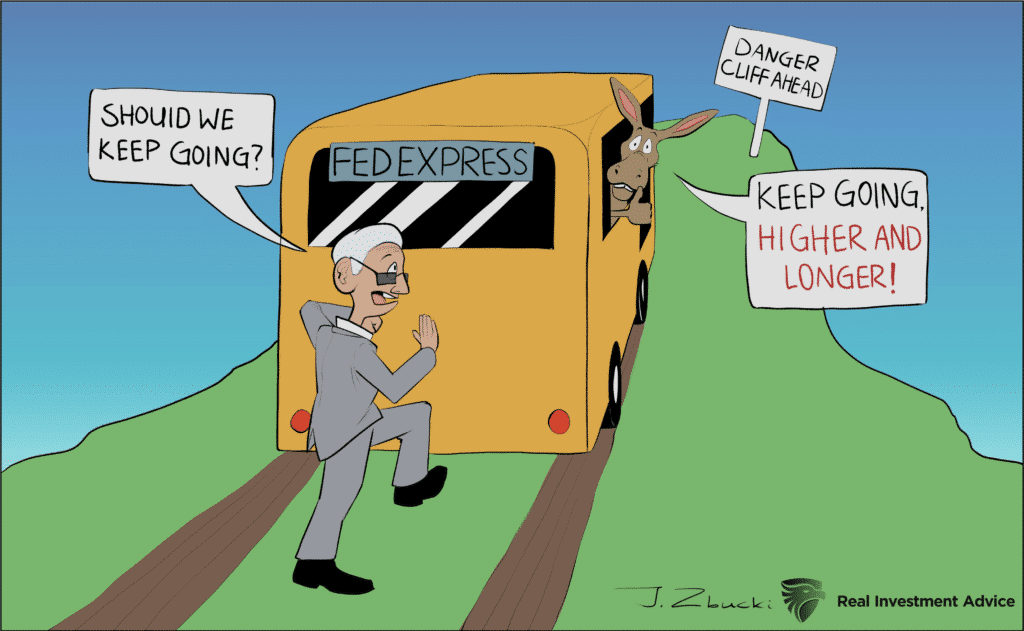
What To Watch Today
Earnings
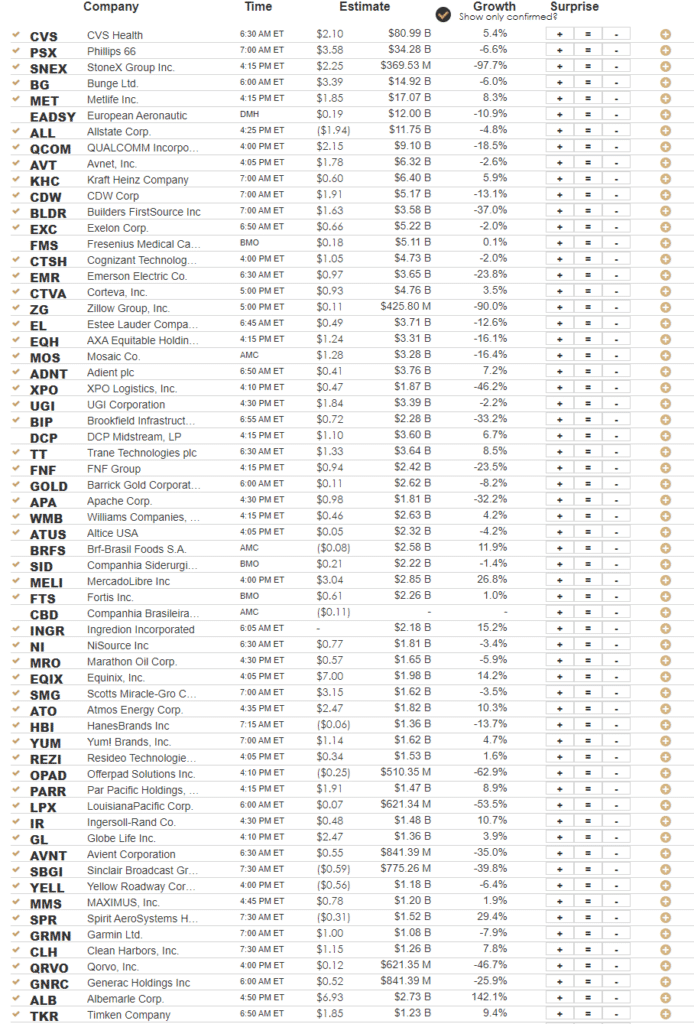
Economy
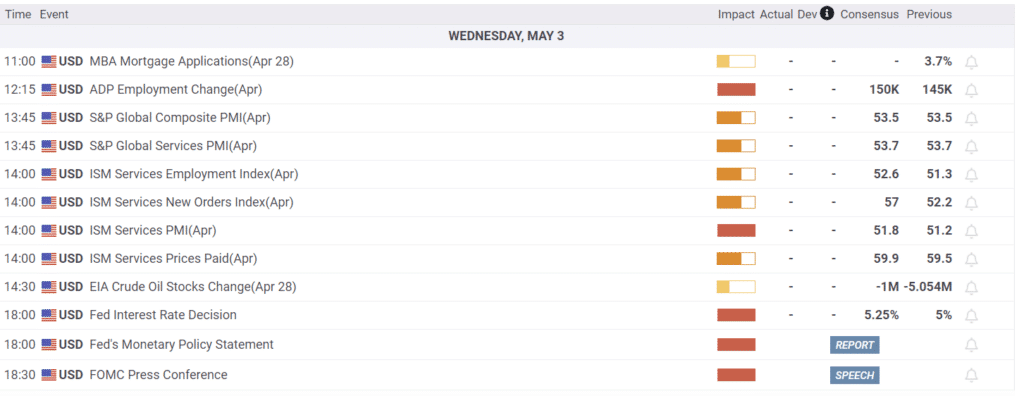
The Sell Signals Know All
Interestingly, when we trigger our money flow, or MACD buy or sell signals, they usually indicate a market turn despite short-term gyrations. At the end of last week, the market defied the sell signals by rallying back to February highs, but the sell signals continued to suggest caution. Yesterday, the market sold off more than 1%, keeping the sell signals intact and suggesting additional downside risk remains.
This afternoon, the Fed will announce their latest 0.25% rate hike to a Fed target of 5%. That rate hike is well priced into the market currently. What is not priced is a more “hawkish” stance by the Fed in the face of still stubbornly high inflation. The market has been pricing in a “pause” by the Federal Reserve with more dovish language about future monetary accommodation or supports given the recent bank defaults. Given that we do not know what the Fed will say today or how the market will react, we remain cautious on our equity exposure until the current “sell” signals are reversed.
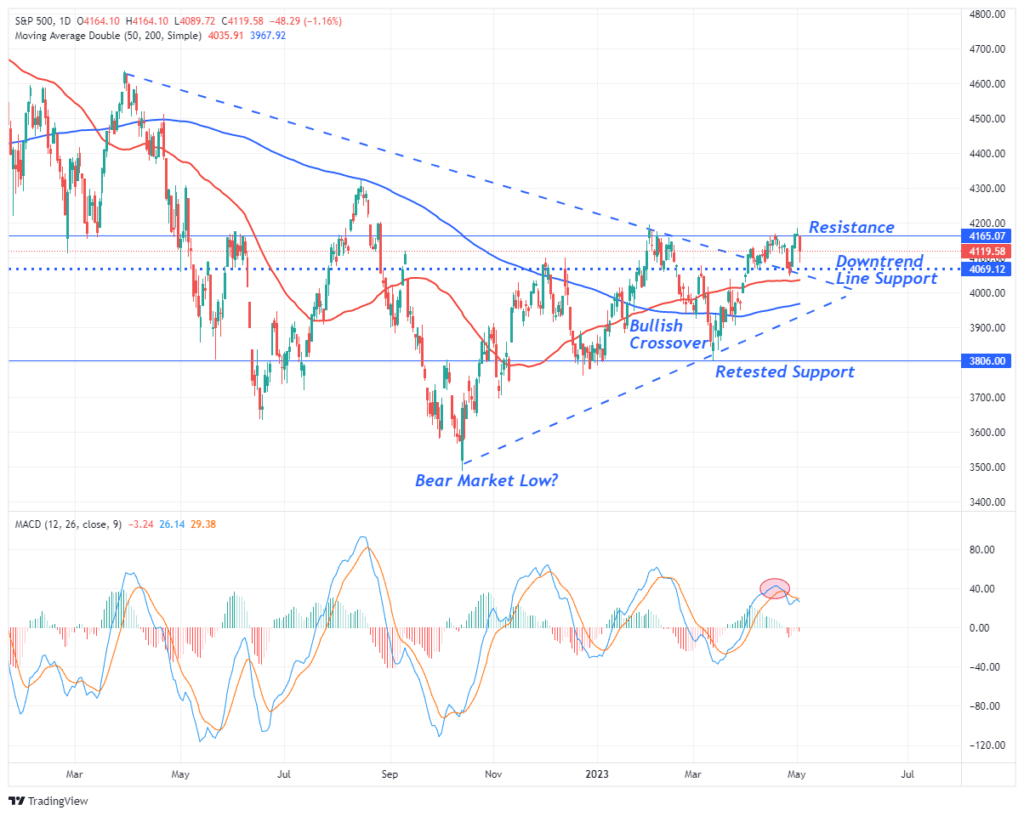

Is AI Coming for Your Job?
ZeroHedge posted an interesting article discussing IBM’s latest announcement that they would replace 8,000 jobs with AI and the broader implications AI will have on the workforce. Per the article:
As Goldman chief economist Jan Hatzius put it, “using data on occupational tasks in both the US and Europe, we find that roughly two-thirds of current jobs are exposed to some degree of AI automation, and that generative AI could substitute up to one-fourth of current work. Extrapolating our estimates globally suggests that generative AI could expose the equivalent of 300 million full-time jobs to automation” as up to “two thirds of occupations could be partially automated by AI.”
The graphs below from Goldman Sachs show which industries and job types will be most and least affected by AI in the U.S. and Europe. White-collar jobs appear to be more at risk than blue-collar jobs.
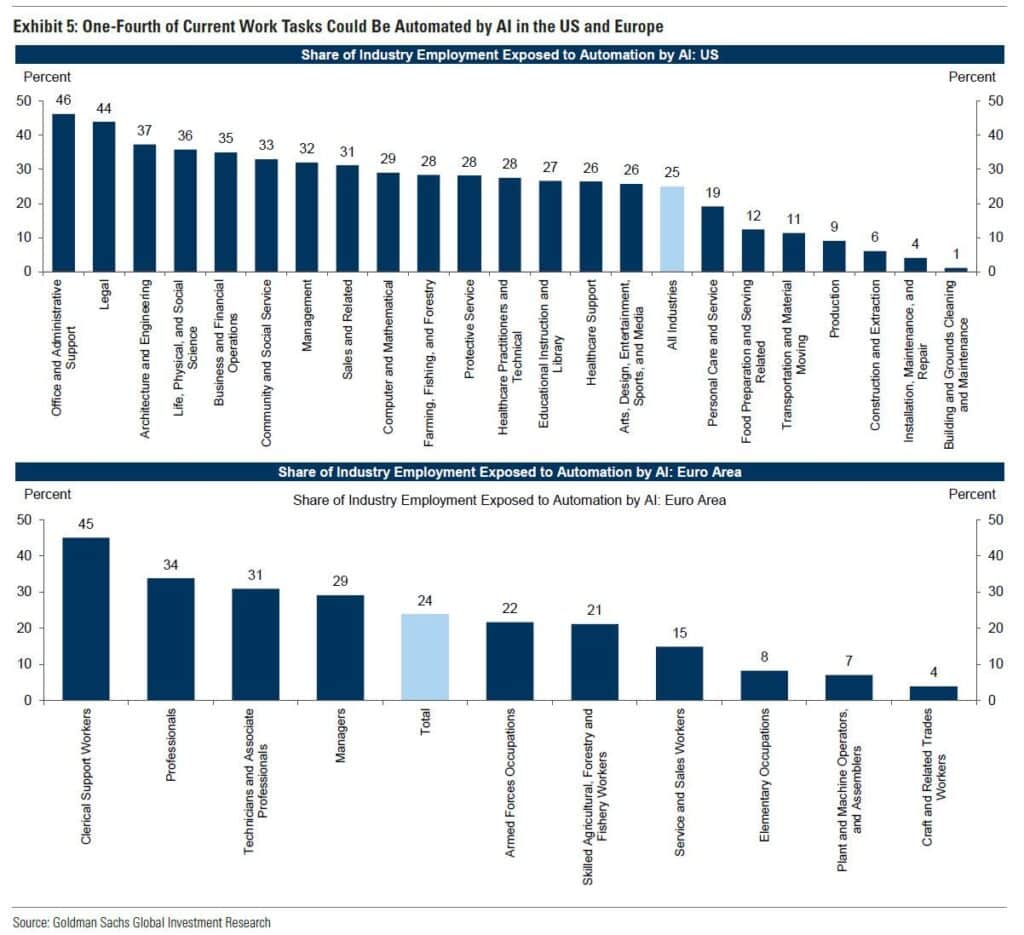
JOLTs Jobs
The JOLTs Job Opening and Labor Turnover report provided another sign that labor market tightness is easing. The data in the report is two months old. March job openings were 9.59 million. While that is historically high, it is heading lower, as shown below. The job quit rate is also falling and nearing its pre-pandemic peak. More people tend to quit jobs when the prospects of finding a better or higher-paying job are high. The job quits rate is a useful labor confidence indicator. Lastly, leisure and hospitality, which has been adding the most employees, also shows weakening labor conditions. There are still 1.507 million job openings in the sector, but it is about 150k less than last year.
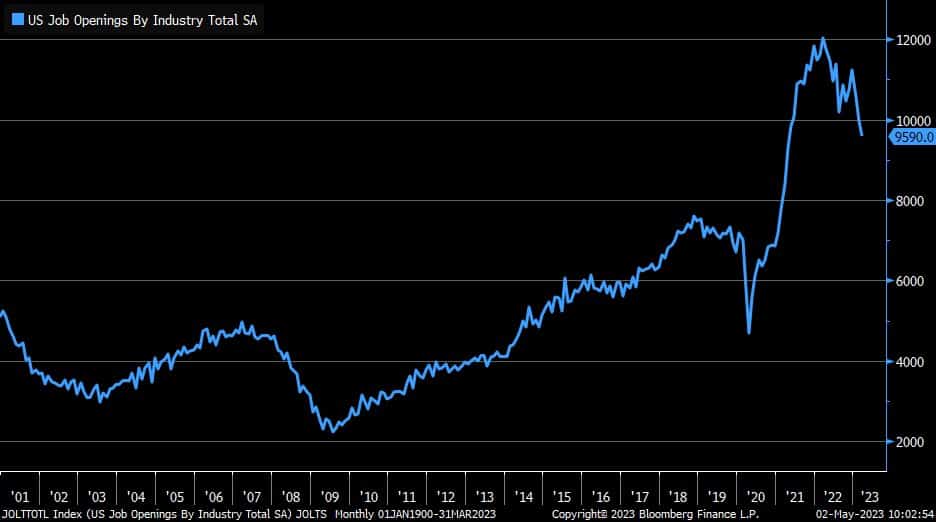
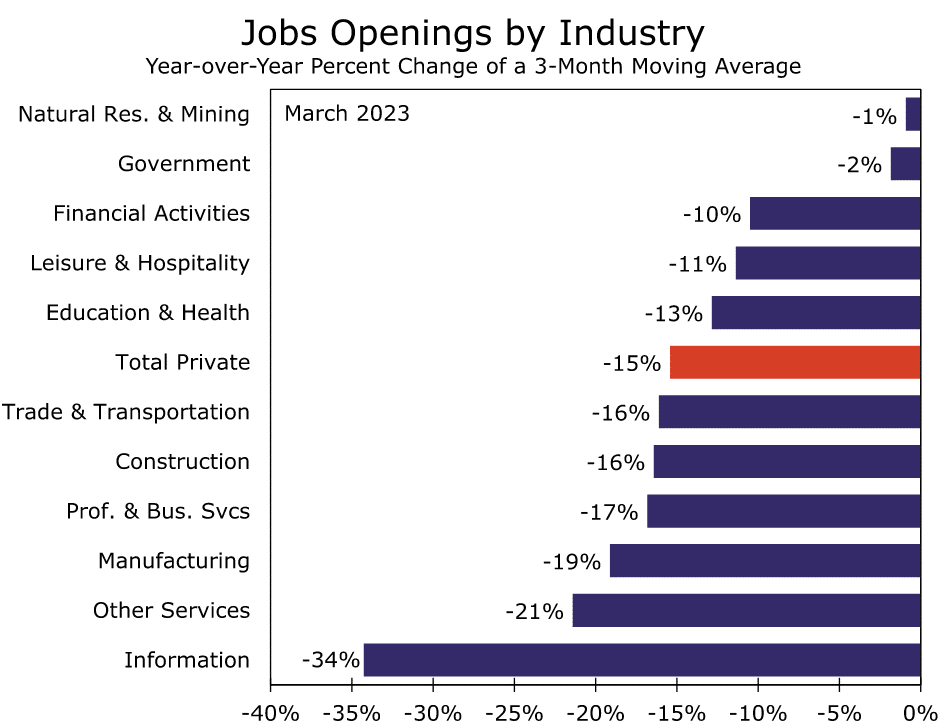
Which Regional Bank is Next?
Regional bank stocks got hit hard yesterday as concerns that fleeing deposits will force loss recognition on their assets, which in turn could erode their equity cushion. In aggregate, banks tend to hold 10% equity versus their assets. Think of equity as you would a home purchase.
If you buy a $100k house with 10% down, you have $10k equity. If the house price falls to $85, your equity is eroded. Homeowners don’t need to recognize the loss unless they sell the house. Banks also do not have to recognize bond losses on large parts of their portfolios unless they lose deposits. However, they are still losing deposits and having to recognize losses. Bank investors wonder if their equity cushions can withstand the loss of more deposits.
As we share below, the KRE regional bank ETF was down sharply yesterday and has been cut in half since early March.
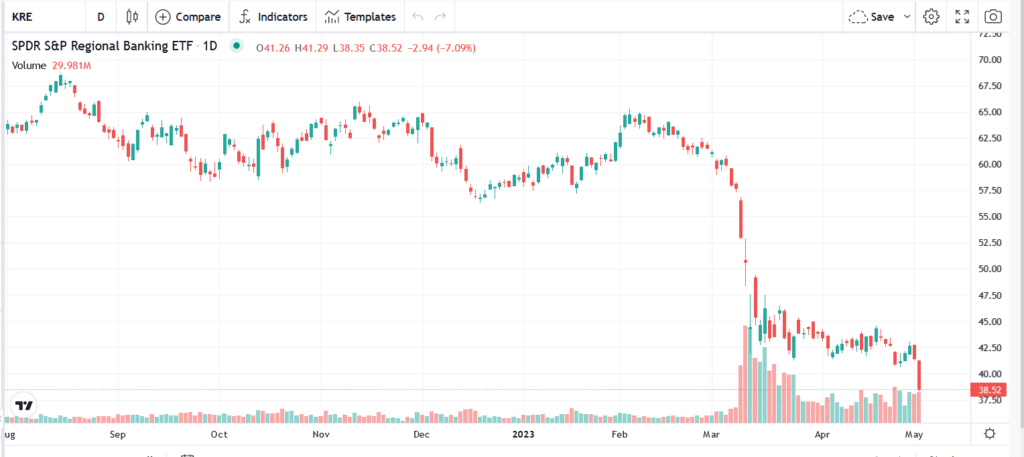
Tweet of the Day
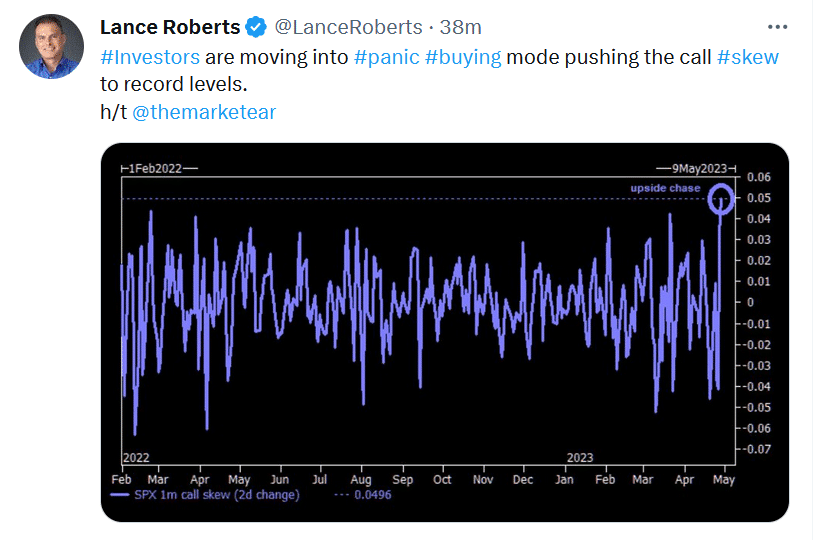
Please subscribe to the daily commentary to receive these updates every morning before the opening bell.
If you found this blog useful, please send it to someone else, share it on social media, or contact us to set up a meeting.
Post Views: 3
2023/05/03




